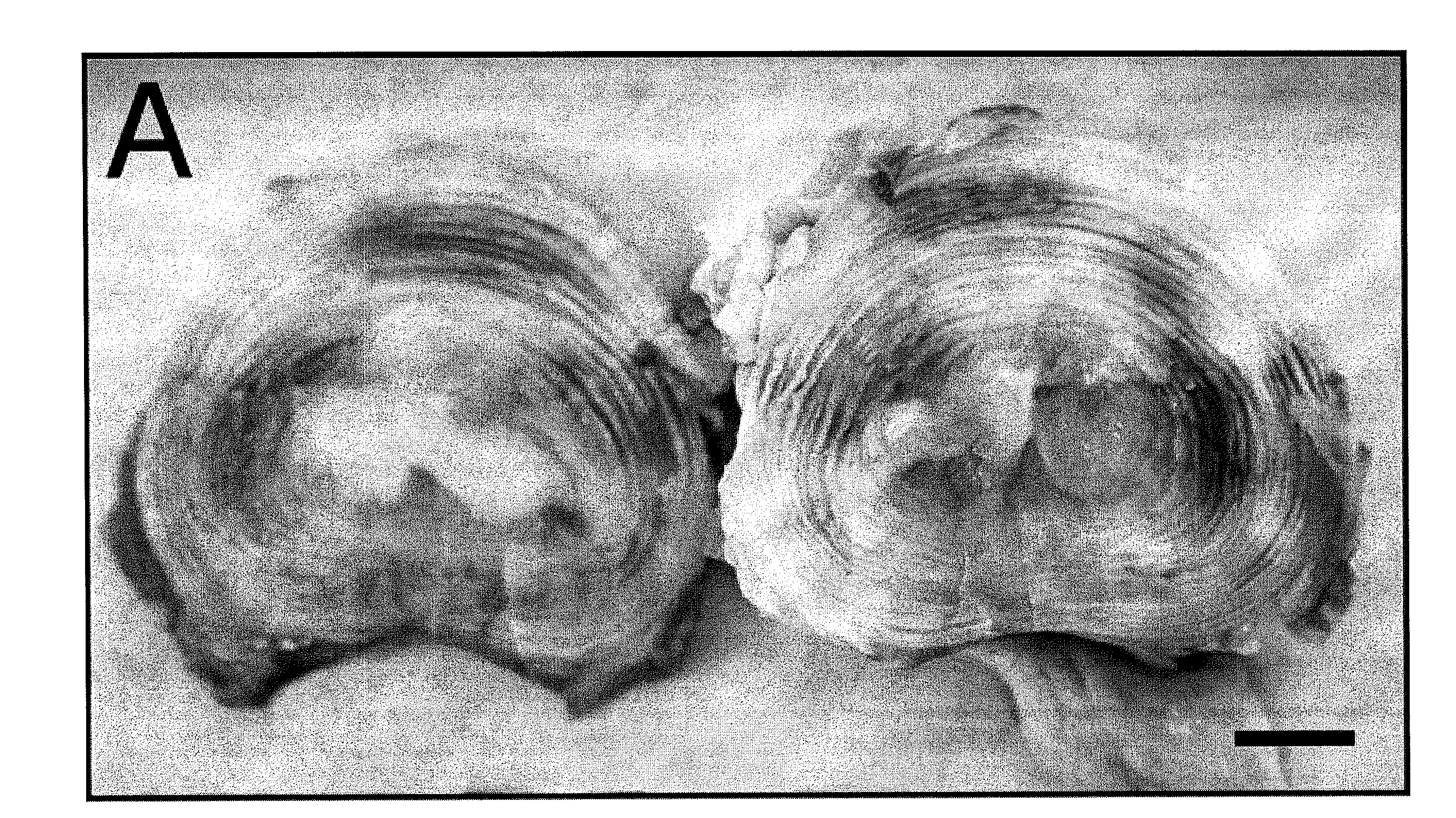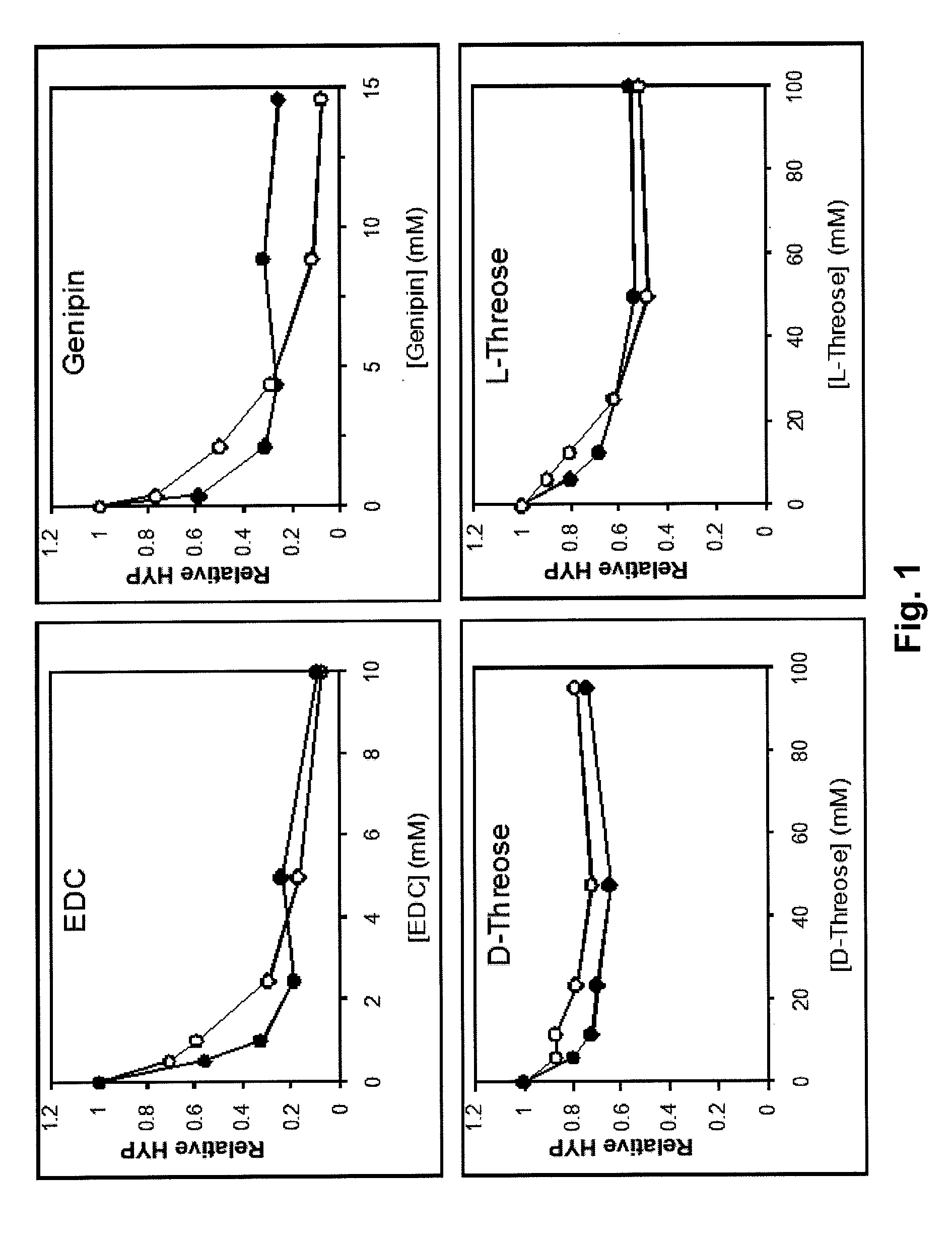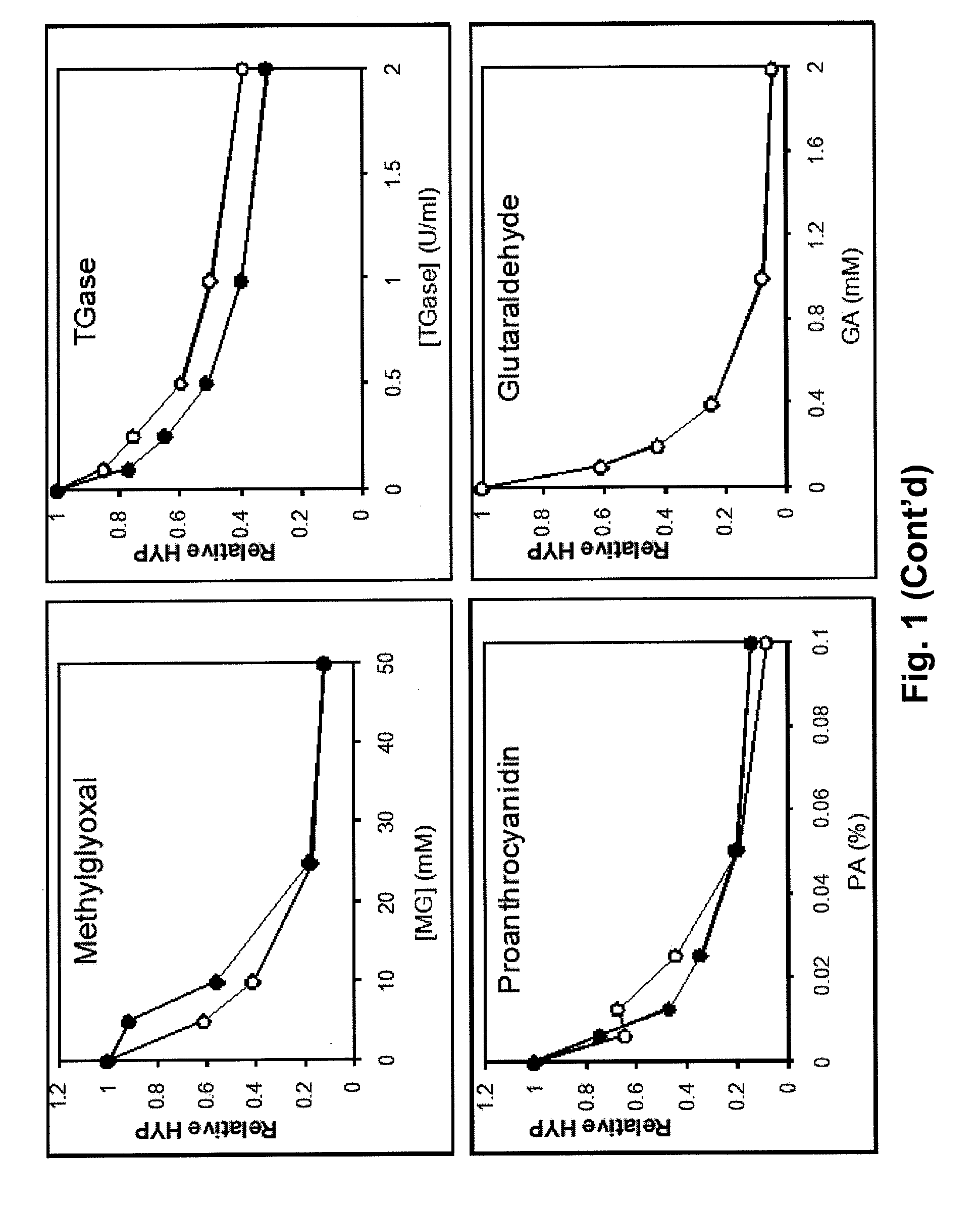Formulations for nonsurgical exogenous crosslink therapy
a crosslink therapy and exogenous technology, applied in the field of tissue treatment, can solve the problems of failure to meet the original ultimate stress level, increase the number of cells, accelerate the fatigue degradation of the remaining joint tissues,
- Summary
- Abstract
- Description
- Claims
- Application Information
AI Technical Summary
Benefits of technology
Problems solved by technology
Method used
Image
Examples
examples 1 & 2
Viscoelastic and Elastic-Plastic Degradation Resistance
[0168]Thirty-three lumbar intervertebral joints were obtained from ten four-month-old calf spines. The intervertebral joints were arbitrarily divided into 3 groups: untreated controls-12 specimens, Genipin treatment 1 (G1)-6 specimens, and Genipin treatment 2 (G2)-13 specimens. The G1 treatment involved 72 hrs of soaking the whole specimen in PBS with a 0.033% concentration of Genipin. Similarly, the G2 treatment involved 72 hrs of soaking whole specimens in PBS with 0.33% concentration of Genipin. 0.33% Genipin in PBS is produced by dilution of 50 ml of 10×. PBS (Phosphate Buffered Saline) with distilled water by a factor of 10 to give 500 ml (500 gm) of PBS and mixing in 1.65 grams of genipin to produce the 0.33% (wt %, gm / gm) solution. Previous testing with pericardium and tendon tissue samples demonstrated the reduction of tissue swelling (osmotic influx of water into the tissue) resulting from crosslinking the tissue. Some ...
example 3
Deformity Resistance
[0179]Experiments were conducted to evaluate the efficacy of applying different formulations of crosslinking reagents with known minimal cytotoxicity unilaterally to intervertebral disc annular tissue in order to affect the lateral bending stability of the tissue compared to pre-treatment. Experiments utilized 5 calf spine segments, each segment comprised of 3 lumbar intervertebral joints (motion segments), four vertebrae and the intervening 3 discs. The pedicles were cut and the posterior processes removed. The segments were randomly divided into a 0.33% by weight genipin crosslinked group, a 0.5% genipin group, a 0.66% genipin group, and a 0.66% genipin plus 0.1% proanthocyanidin group. Each group consisted of one 3 motion segment specimen. Each pre-treated spine served as its own control. Repeated testing was performed on some untreated and treated specimens to determine repeatability of the measurements. Additional appropriate concentrations and combinations ...
example 4
[0185]Ten annulus fibrosus circumferentially aligned specimens from bovine lumbar (T12-L5) intervertebral discs were divided into two groups and either soaked two days in a 0.15M PBS or a 0.15M PBS plus 0.33% genipin solution. A custom loading fixture attached to a uniaxial materials testing system was designed to hold an annulus specimen perpendicular to the travel of a metal cylinder placed in a pre-existing radial cut. The cylinder was then pulled radially (perpendicular to lamellae) towards the external layer. Time dependent force and displacement data was acquired simultaneously. Tearing resistance was quantified in two ways: peak force normalized by specimen thickness and tearing energy per area of tear. Differences between groups were analyzed using the Mann-Whitney non-parametric test.
[0186]Normalized peak force was 23.9 and 42.7 N / mm for control and genipin crosslinks groups respectively (p=0.076). Total energy per area of tear was 19.0 and 40.2 mJ / mm2 for co...
PUM
| Property | Measurement | Unit |
|---|---|---|
| Molar density | aaaaa | aaaaa |
| Molar density | aaaaa | aaaaa |
| Molar density | aaaaa | aaaaa |
Abstract
Description
Claims
Application Information
 Login to View More
Login to View More - Generate Ideas
- Intellectual Property
- Life Sciences
- Materials
- Tech Scout
- Unparalleled Data Quality
- Higher Quality Content
- 60% Fewer Hallucinations
Browse by: Latest US Patents, China's latest patents, Technical Efficacy Thesaurus, Application Domain, Technology Topic, Popular Technical Reports.
© 2025 PatSnap. All rights reserved.Legal|Privacy policy|Modern Slavery Act Transparency Statement|Sitemap|About US| Contact US: help@patsnap.com



